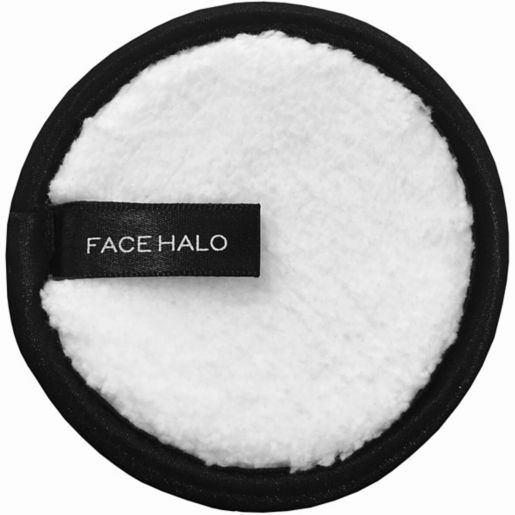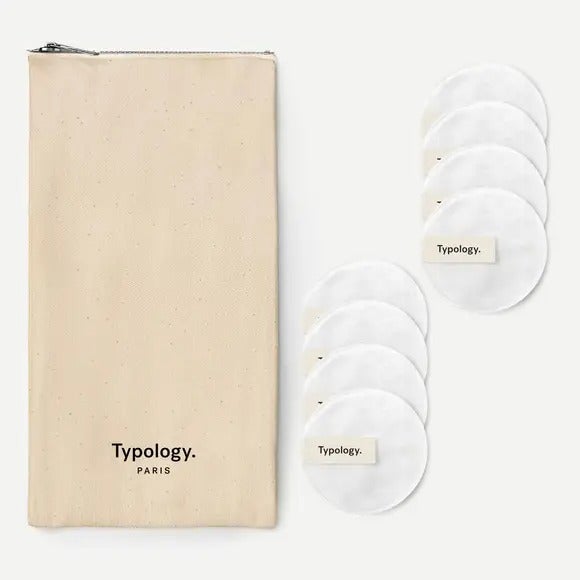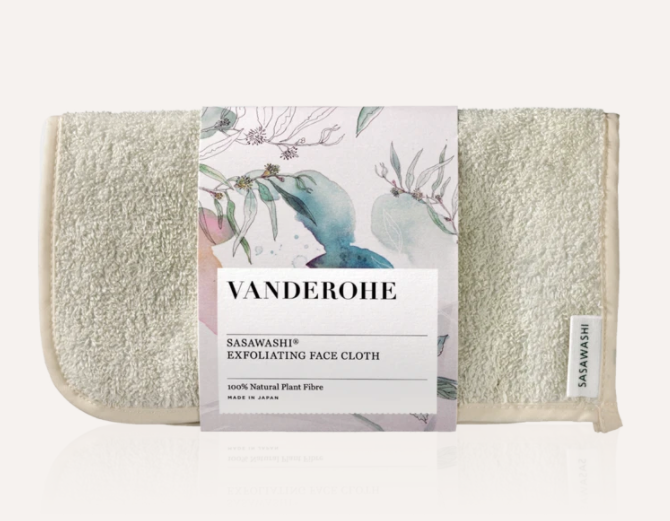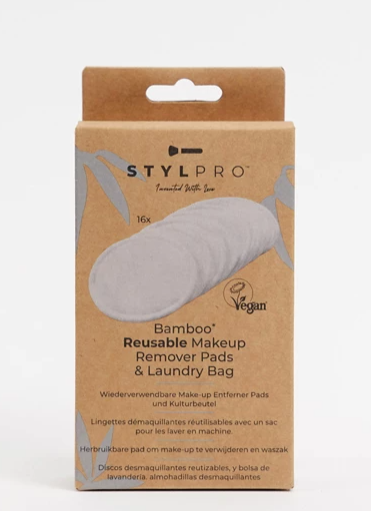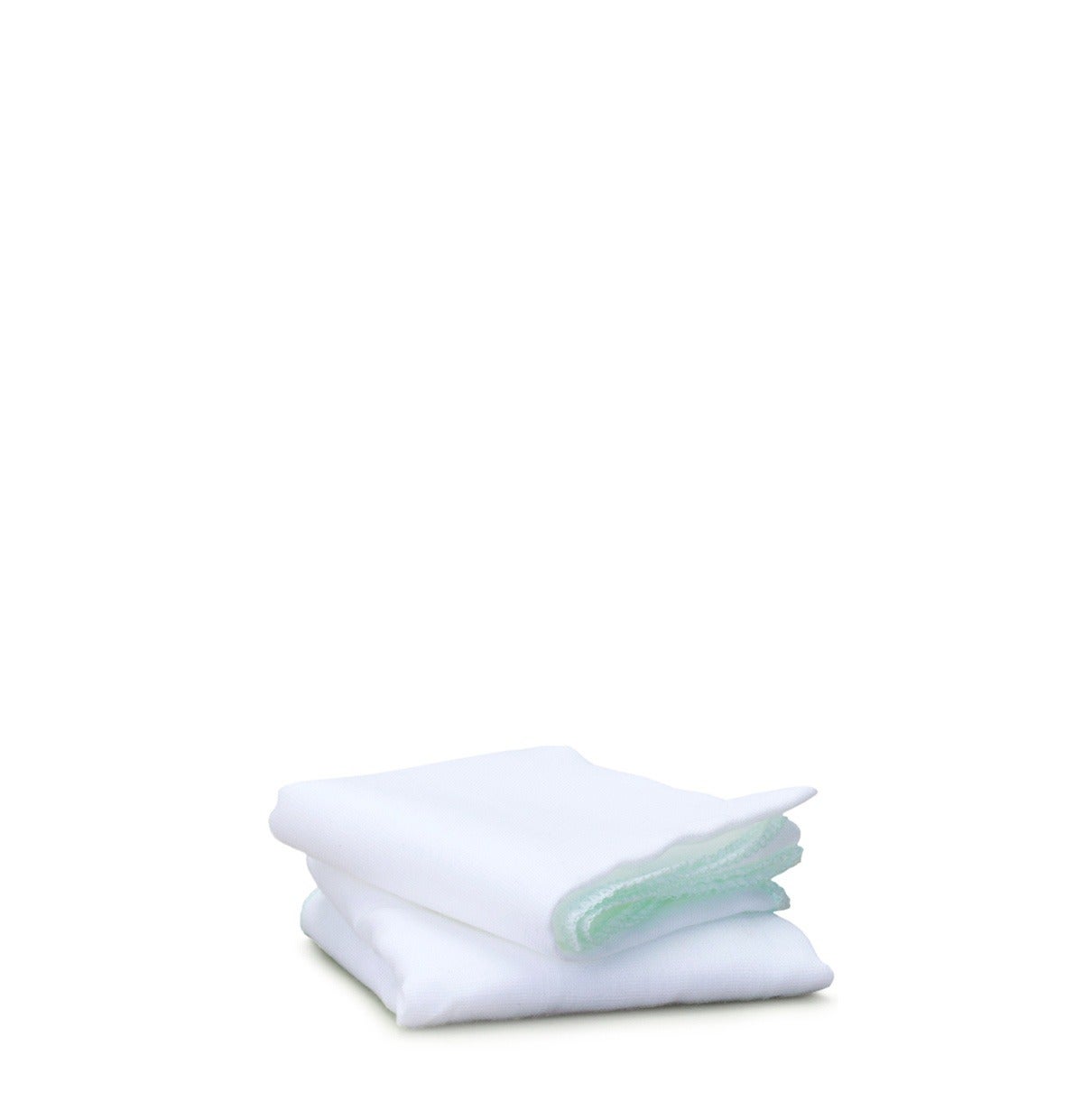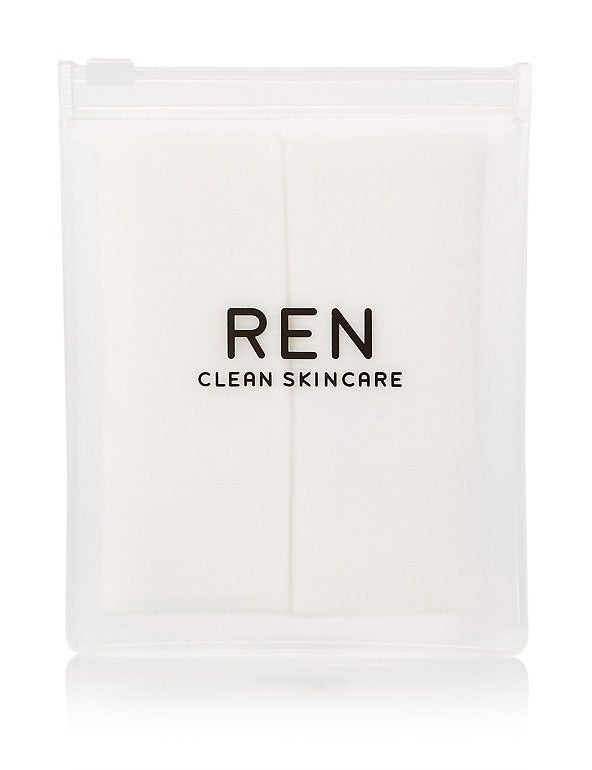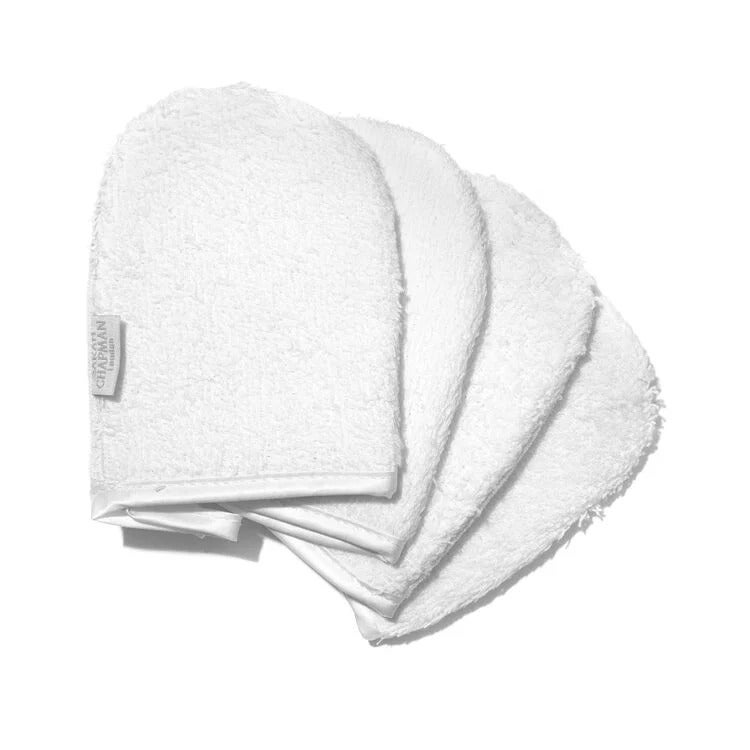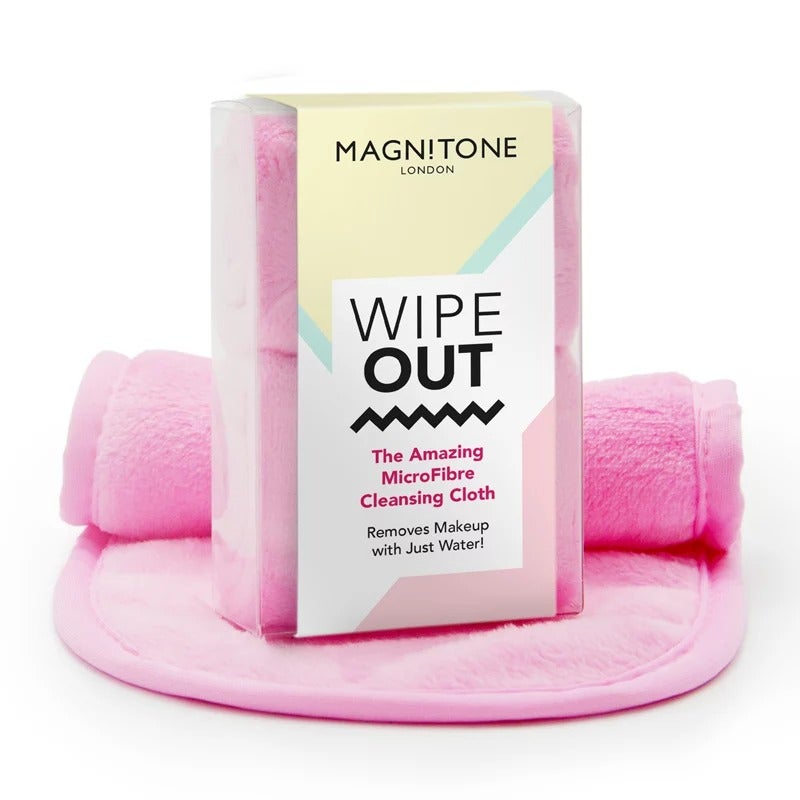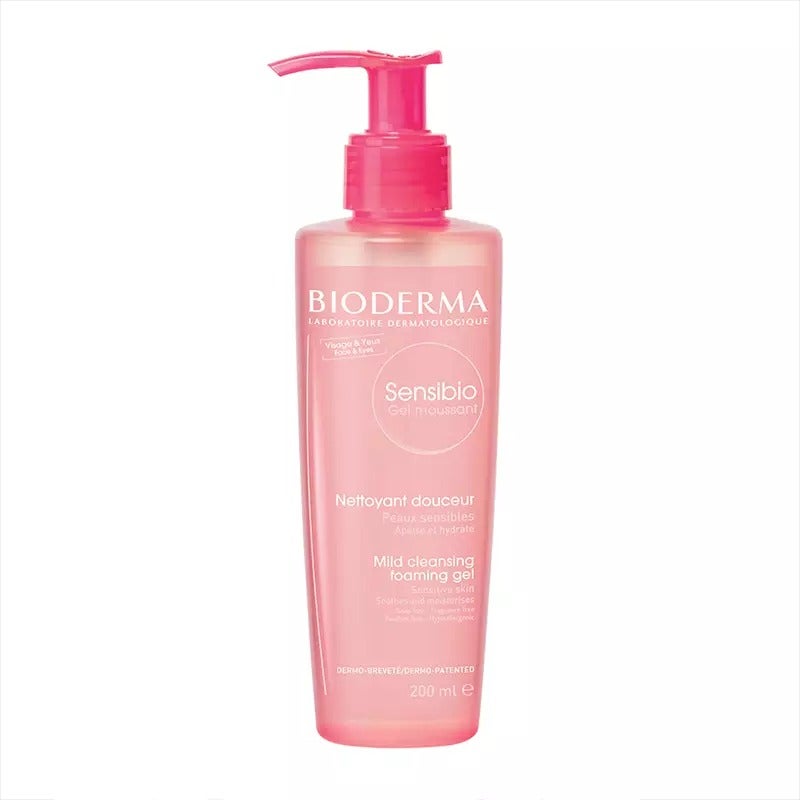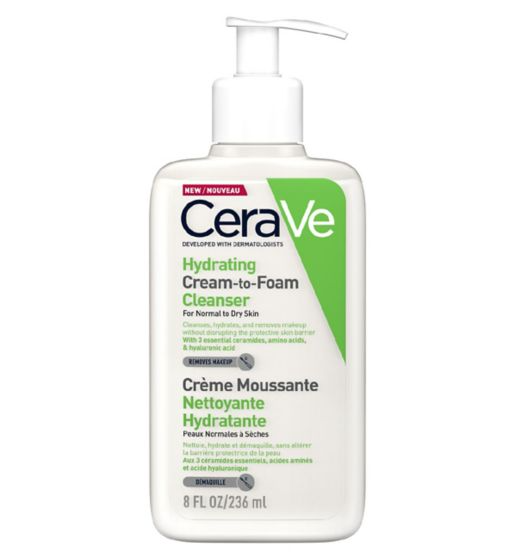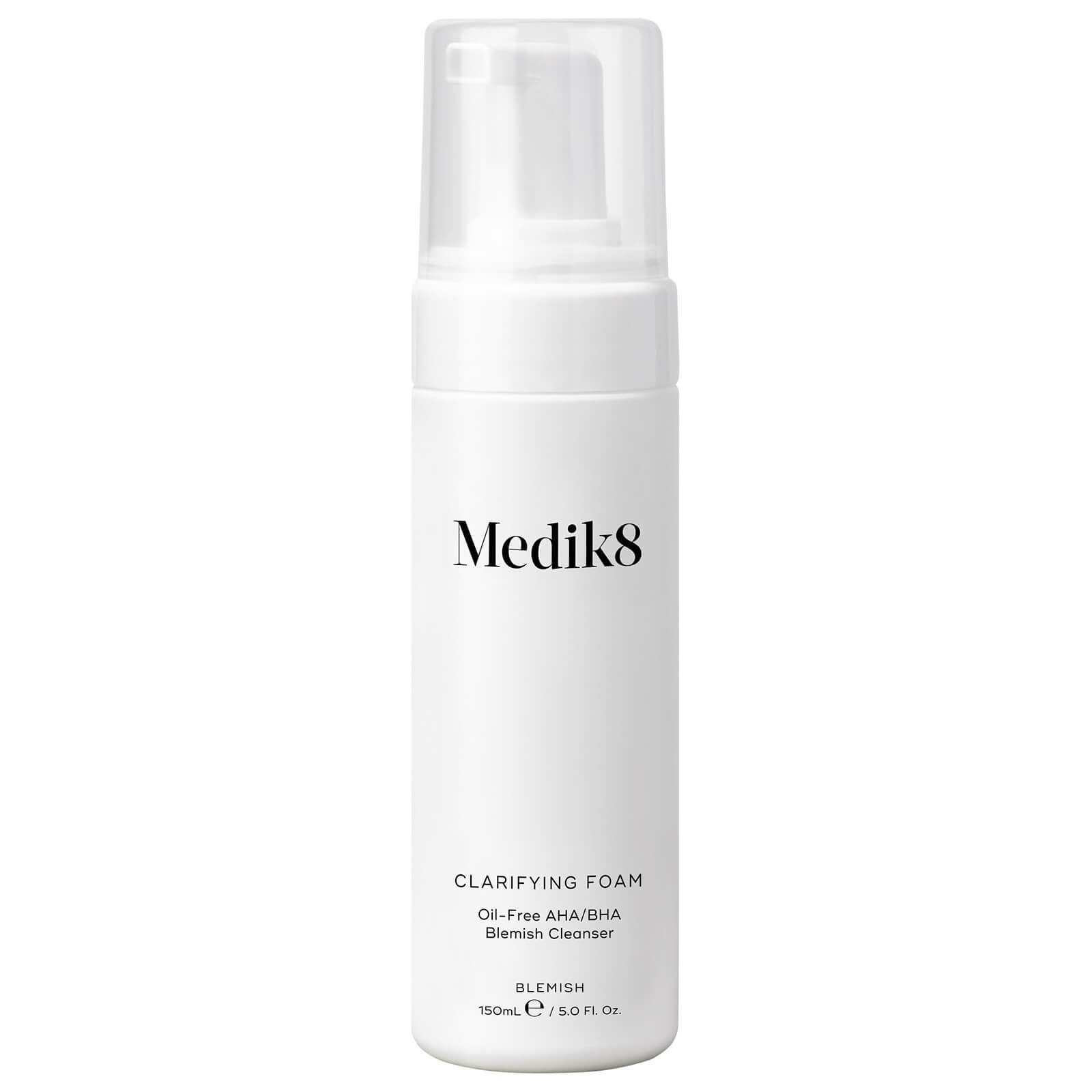Now that we know face wipes take years to break down in landfill and don't dissolve makeup well at all (one skin expert told me I was just smearing grease and dirt all over my face – lovely), other cleansing rituals have taken over. You might look to an oil or balm cleanser to cut through foundation, mascara and SPF but a micellar water-drenched cotton pad is probably the most popular choice.
Unlike wipes (often packed with strong preservatives and ingredients such as alcohol which have the potential to irritate skin), cotton pads are relatively no frills. The addition of micellar water, lotion or cream cleanser makes getting rid of makeup easy but, just like wipes, cotton pads end up in landfill.
AdvertisementADVERTISEMENT
"Disposable cotton pads also end up in the toilet and our sewer systems, which is an equally important and problematic issue," adds Ashlee Piper, sustainability expert and author of Give a Sh*t: Do Good. Live Better. Save the Planet. "The issue is that most of these items (ones that are pure cotton) could easily break down if composted. But landfills are oxygen-starved spaces, so even 'biodegradable' items essentially petrify and hang around longer than they normally would there."
That's where reusable makeup removal pads come in. Big among makeup and skincare lovers, the idea is that they can be used time and time again, remove a full face of makeup in one go and can be rinsed out by hand using soap and warm water, or machine washed. Arguably the most popular brand right now is Face Halo. The reusable pads don't require any product, just a little water, to slice through heavy foundation and mascara. But are they really as good as they're cracked up to be?
Do reusable cleansing pads actually work?
According to Google trends, more and more of us are searching for reusable cleansing pads and it's hard to ignore the Face Halo hype in particular. Skin experts and makeup artists rate the reusable pads for super speedy makeup removal and I'm willing to try anything that cuts time from my evening skincare routine. Admittedly, I was suspicious. How well could one small pad cut through two layers of matte foundation, waterproof eyeliner and liquid lipstick (all of which are notoriously hard to remove with a wipe or micellar water and cotton pads) using just water?
AdvertisementADVERTISEMENT
At first glance, the Face Halo looks just like a circular, fluffy flannel. I ran it under the tap, squeezed out the excess water and got to work on my makeup. The results took me by surprise. After one swipe, the entirety of my eye makeup had disappeared and because the surface area is a little larger than a cotton pad, the Face Halo erased my foundation, blush and bronzer in a couple of seconds, too. Not even liquid lipstick, which always seems to stain my lips even after cleansing, stood a chance. So far, so good.
Are reusable cleansing pads better for the environment than disposable cotton pads?
"Most disposable cotton pads are not organic, which means they use vast amounts of chemicals, pesticides and fertilisers in the production process," says Olivia Thorpe, skin expert and founder of Vanderohe. "They are detrimental to both humans and wildlife," Olivia continues. "Once the cotton has been grown, further chemicals are used in the process of turning it into a smooth and compact cotton round. The bleaching and processing means that these cotton rounds then do not biodegrade as they should do."
I use at least three cotton pads every evening without fail to remove SPF and makeup, which only goes to cement Olivia's research which suggests that most people use up to 1,000 cotton pads a year, throwing them away without a second thought. This contributes largely to landfill, whereas reusable pads such as Face Halo can be used hundreds of times. "Switching to a reusable makeup-removing pad which has ideally been made without any harmful chemicals and that can be washed and used repeatedly for many years obviously decreases that environmental and health impact hugely," says Olivia.
AdvertisementADVERTISEMENT
Ashlee adds: "Reusable cleansing pads are obviously much better for the environment because you're reusing them, which not only stems disposal but also production. Cotton production can be problematic in a variety of ways, so washing and reusing some cloths is so much better than reaching for a fresh, disposable one every night." But what happens to reusable pads and cloths when they reach the end of their lifespan? "A well-loved pure cotton cloth can be composted, making its end of life pretty responsible pending you actually compost it," says Ashlee. "Cloths that are too gnarly for your face can also be great home cleaning cloths or donated to animal shelters, pending they're still absorbent and clean."
It pays to avoid reusable cleansing pads which contain fibres such as polyester, which are difficult to break down. "I recommend avoiding polyester in all sorts of elements (such as clothes and furniture) whenever possible," says Ashlee. "Microplastics are released when synthetic materials and fibres are laundered or even just worn around," she adds. "Most of these 'magic mitt' type makeup removers are great as they don't require excess product and can be reused, but their microplastics shed and end of life are not nearly as low impact as a pure cotton, hemp, bamboo, konjac sponge or cloth," says Ashlee, so take a look at the label if you are concerned.
Are reusable cleansing pads better for your skin?
Skin experts would argue that reusable cleansing pads are better for your skin but there are some key points to remember. "They are soft and less abrasive than some cleansing devices, so help prevent micro-tears (small tears) in your skin as a result of the dragging action," says Dr Parisha Acharya, aesthetic doctor at Waterhouse Young. "They also do not contain any preservatives so are unlikely to inflame sensitive skin types but you still need to be gentle while using them, as overzealous hands can still aggravate your skin."
AdvertisementADVERTISEMENT
Dr Acharya says that reusable cleansing pads do not replace a proper, water-based cleanse, either. "It's a great first step in your makeup removal regime, gently wiping away makeup and dirt from the face and eyes," adds Dr Acharya. "I recommend you follow up with your normal cleanser after using them to ensure squeaky clean skin."
What are the best reusable cleansing pads and cloths?
I'd recommend Face Halo The Modern Makeup Remover, £17.95, made from fine microfibres. Each pad can be machine washed up to 200 times and is easily recycled. Just head to the website to find your nearest recycling point. Bamboo pads are also a popular option, with brands such as Typology and STYLPRO, but some may contain other components such as polyester for softness and durability.
Cleansing cloths are also a great option. "Cotton muslin should be biodegradable but it always depends on how it's been treated and what it has been combined with," says Olivia. "Anything that is mixed with 100% natural materials is going to be better for the environment than mixing with a non-biodegradable material such as polyester. Our Sasawashi Cloths, £12, are made from a combination of washi (essentially paper) and kumazasa, a type of bamboo that grows abundantly in the highlands of Japan," says Olivia. "They are woven in a way which creates little loops that help lift dirt and grime from the skin and gently exfoliate without harming the delicate skin barrier." Sasawashi is also naturally oil-absorbing and antibacterial. "The bonus is that they are the size of a normal flannel, so you can double them up for exfoliating your body, too," adds Olivia. "With regular washing and good care, these cloths should last for years."
AdvertisementADVERTISEMENT
Dr Acharya recommends Sarah Chapman, Liz Earle, Ren Clean Skincare or facetheory when it comes to face cloths. "Personally, I am a big fan of muslin cloths," she says. "They are soft, gentle and reduce the likelihood of you damaging the skin through scratching or abrasion. They also exfoliate and buff, which removes dead skin cells, stimulates collagen production and improves skin texture." Dr Acharya advises that the cloth should be used wet, with tepid or lukewarm water.
shop 7 products
"Another use is as a cool compress," adds Dr Acharya. "Run the cloth under cool water, wring out and store in the fridge or freezer in a zip-lock bag. This is very useful for those that suffer with puffy eyes, rosacea and perimenopausal hot flushes. Cloths like these are sustainable and better for the environment as they reduce unnecessary landfill." If you have acne-prone or oily skin in particular, Dr Acharya recommends a microfibre pad for an initial makeup cleanse followed by a foaming cleanser and salicylic acid leave-on toner or exfoliator. Try Magnitone London WipeOut! The Amazing MicroFibre Cleansing Cloth, £15, which is very gentle on inflamed skin.
If you're going to use disposable cloths for makeup or skincare application, Ashlee urges you to dispose of them properly. "If you're exploring new options, focus on reusability, durability and total life cycle."
Refinery29's selection is purely editorial and independently chosen – we only feature items we love! As part of our business model we do work with affiliates; if you directly purchase something from a link on this article, we may earn a small amount of commission. Transparency is important to us at Refinery29, if you have any questions please reach out to us.
AdvertisementADVERTISEMENT







